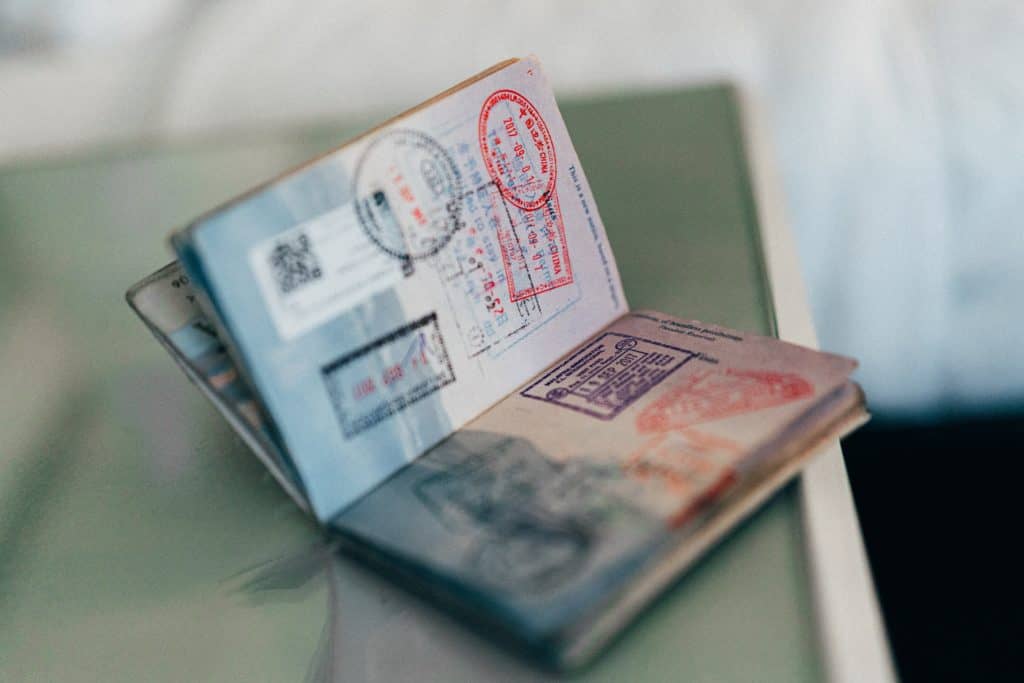To enter a country, unless otherwise informed, you will be required to obtain some form of visa. In the case of Cambodia, it is required for almost all citizens to obtain a Cambodia visa. This will take up one page of your passport, a nice little souvenir for your trip.
No matter where you are obtaining your Cambodia travel visa from or how long you are staying for, the visa will be for a month!
Who Needs a Cambodia Visa?
Everyone who visits Cambodia must have a visa, unless you are exempt. No matter the nationality, everyone who enters Cambodia must have more than 6 months before their visa expires and at least one page left in their passport.
Those who are from Southeast Asian countries do not need a visa to enter Cambodia for either 14 or 30 days:
- People with passports from Indonesia, Laos, Malaysia, the Philippines, Singapore and Vietnam can stay in Cambodia for 30 days for free.
- People with passports from Brunei, Thailand and Seychelles can stay for 14 days for free.
How do you get a Cambodia visa?
You’ll arrive into Cambodia through the airport or over the border from Thailand, Laos or Vietnam. If you are on an organised trip, your tour guide will be able to assist you, however, you will still need to through immigration yourself.
To enter Cambodia, you will need two passport photos, a Cambodia visa application form and 30 USD in cash (make sure to have the exact amount as you won’t get change). Not having any of the above will result in extra charges, for example, a passport photo at the border will cost an extra two dollars.
Please note that there is no option to pay by card to get your visa. This applies to all countries in Southeast Asia.
When in immigration you’ll be asked to wait your turn to enter the country. When you are instructed to approach the immigration officer, you’ll be asked to scan all of your fingers for security measures. Then you can enter!
Additionally, it is possible to apply and receive an e-visa for Cambodia prior to your arrival. This will shorten your waiting time, however, the processing fee is an additional seven dollars.
Cross the Border: Travelling to Cambodia by Bus
If you are travelling by land your bus company may take care of everything.
When you enter the bus to go to your chosen destination, the bus driver and his assistant will ask for your passport and your 30 dollars for the visa. This is the standard procedure, there is no need to panic at this point. From here on in, you follow the instruction of the bus driver.
When you arrive at the border, you will be greeted by several touts looking to help you with your visa for a small price. If you did not follow the above instructions – you’ll wish you had now! It is best not to interact with these people as they can be pushy and sometimes aggressive.
At this point, you will be asked to fill out your Cambodia visa application form, you should bring several pens as there are never any pens in immigration. Again, the touts will try to push you to buy one for two dollars.
The waiting time at the land border can sometimes be lengthy, particularly when coming from Thailand in the peak season (November-March).
Arriving by Plane
There are three international airports in Cambodia: Phnom Penh, Siem Reap and the most recent addition, Sihanoukville.
When arriving in an international airport, obtaining your Cambodia visa will be much the same as the land border, however, you will have the additional comfort of not being surrounded by touts.
As an international traveller, you may be requested to produce your immunisation documents, in particular, yellow fever, before your Cambodia visa is granted.
Overstaying Your Visa
Visa extensions are possible at any of the Cambodia borders, however, if you overstay your visa you will be charged 10 dollars per day. Please note that if you overstay your visa for a considerable amount of time, the Cambodian government withhold the right to deny you entry to the country.
Always Check the Latest Updates Before Your Trip
Whilst this guide is packed full of useful information, it is best that you check the sources below and the government websites before travelling to ensure you have the most recent up-to-date information. This can save you a lot of hassle before heading off on your trip!
